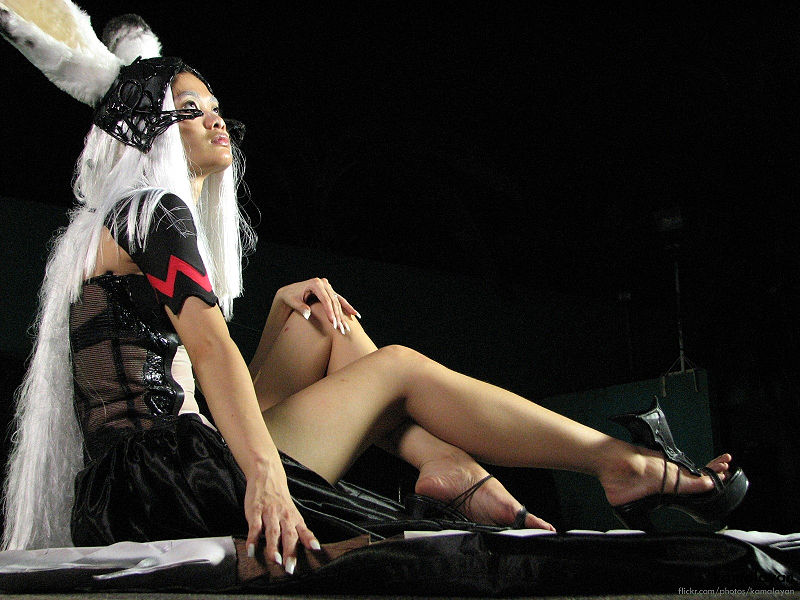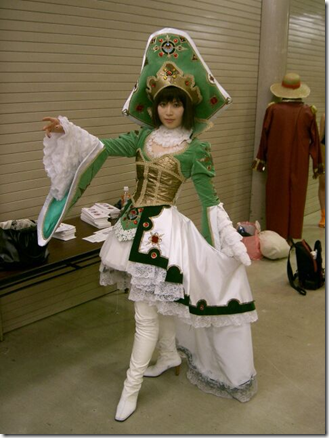Cosplay
I’m representing the anthropological view on “cosplayers” in tomorrow’s panel, so I figured I’d provide some background. Cosplay is the Japanese shortening of the term “costume-play” and refers to people who dress up based on characters from anime, games, books, television, anything really. As far as records go, cosplay is said to have originated in Japan around 1978, and it wasn’t until 2000 or so that cosplay became popular in the US.
As for the actual act of cosplaying, cosplay involves a rediculous amount of time and effort (if done well),because a great deal of attention is put in the crafting of the costume. While wearing the costume, the person normally takes on the persona of the character they are dressed as, often adopting different mannerisms or speech.
One of the critical problems faced by fans of cosplay is that as a mostly visual medium shown on the internet, there are a large number of “critiquers” who take pleasure in insulting and degrading cosplayers. The most common complaints relate to the weight of the cosplayer, whether or not he/she is hot “enough for the costume,” the ethnicity of the cosplayer (generally, non-Japanese cosplayers are looked down upon) and the quality of the costume itself. This leads to the stereotype that in order to be a successful cosplayer, one must be female, Japanese, and thin and/or attractive.
Which leads to another issue (and one that probably relates more to our class): gender. Since I’ll touch on this in class tomorrow, hopefully, I’d like to just post some useful terms.
Crossplay is when a female dresses as a male character or vice versa
Crossdressing is when a female dresses in male clothes, but not necessarily as a male character, and vice versa
Trap refers to a male who dresses convincingly as a woman. It is a slur used to “warn other unsuspecting men” of the cosplayer’s gender.
There is a difference, also, between FtM crossplayers (female to male), and MtF crossplayers, in that male crossplayers are stigmatized. This is due mostly to the fact that the characters being cosplayed are generally from anime/video games and are therefore androgynous or effeminate looking,
which is easier for women to pull off. That and a history of males attempting costumes from series like Sailor Moon (tight tops and VERY short skirts) have led to a negative backlash against male cosplayers.
As for the technology tie-in, cosplay is nothing without technology. Not only is it a primarily internet-based phenomena (at least the exchange of images), but also the technology of clothing allows cosplayers to change genders/challenge gender stereotypes/etc.
For more information about the psychology of “dress-up,” check out this paper: “Playing Dress-up: Costumes, roleplay, and imagination”
For more information in general: Wikipedia and Cosplay Lab





Comments are closed.